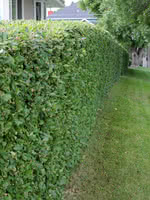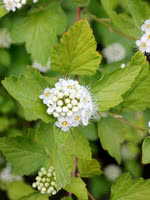Mon-Fri 9am - 5pm Mountain time
Peking Cotoneaster vs Ninebark
Cotoneaster acutifolia
Physocarpus opulifolius
NOT AVAILABLE THIS SEASON - MIGHT RETURN
CUSTOM GROW
Peking Cotoneaster is a medium-sized shrub that is well adapted to colder climates. Best suited for use as a hedge, Peking Cotoneaster has dark green foliage that turns a stunning reddish orange in the fall.
Hardy fruit guru, Bernie Nikolai (DBG Fruit Growers), has started to recommend grafting hardy pear varieties to Peking Cotoneaster after his experiences were successful and produced fruit faster than other rootstocks. Remember to leave some nurse limbs if you try this.
Ninebark is a small, multi-stemmed shrub, that is used to add texture or colour to any yard.
It features flaky, cinnamon-brown bark, attractive white flowers, and long, maple-like leaves.
Peking Cotoneaster Quick Facts
Ninebark Quick Facts
In row spacing: 0.3 m (1.0 ft)

